
Keywords: symbiont
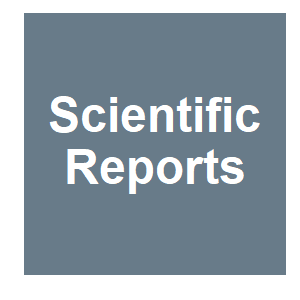
|
Wolbachia has subtle effects on thermal preference in highly inbred Drosophila melanogaster which vary with life stage and environmental conditionsA. Strunov, C. Schoenherr and M. Kapun, Scientific Reports, 13:13792. 2023.
Temperature fluctuations are challenging for ectotherms which are not able to regulate body temperature by physiological means and thus have to adjust their thermal environment via behavior. However, little is yet known about whether microbial symbionts influence thermal ... Keywords: Anopheles, gene drive synthetic, malaria, microsporidia, mosquito, symbiont |

|
A mosquito symbiont takes down malariaA. Taglialegna, Nature Reviews Microbiology, 2023.
Malaria, a parasitic infection transmitted by Anopheles mosquitoes, is globally prevalent. Control strategies for malaria include insecticides and antiparasitic drugs, which target the mosquito vector or the parasite in the human host, respectively. The effectiveness of these ... Keywords: Anopheles, gene drive synthetic, malaria, microsporidia, mosquito, symbiont |

|
Delftia tsuruhatensis TC1 symbiont suppresses malaria transmission by anopheline mosquitoesW. Huang, J. Rodrigues, E. Bilgo, J. R. Tormo, J. D. Challenger, C. De Cozar-Gallardo, I. Pérez-Victoria, F. Reyes, P. Castañeda-Casado, E. J. Gnambani, D. F. d. S. Hien, M. Konkobo, B. Urones, I. Coppens, A. Mendoza-Losana, L. Ballell, A. Diabate, T. S., Science, 381:533-540. 2023.
Malaria control demands the development of a wide range of complementary strategies. We describe the properties of a naturally occurring, non?genetically modified symbiotic bacterium, Delftia tsuruhatensis TC1, which was isolated from mosquitoes incapable of sustaining the ... Keywords: Anopheles, gene drive synthetic, malaria, microsporidia, mosquito, symbiont |

|
Microbe stops mosquitoes from harboring malaria parasiteC. Offord, Science, 2023.
Researchers have tried to use microbes to control mosquito-borne diseases before. The virus-fighting bacterium Wolbachia pipientis has shown particular promise against dengue fever in recent clinical trials and is already used in some areas of the world. But most methods for ... Keywords: Anopheles, gene drive synthetic, malaria, microsporidia, mosquito, symbiont |

|
Engineered symbiotic bacteria interfering Nosema redox system inhibit microsporidia parasitism in honeybeesH. Lang, H. Wang, H. Wang, X. Xie, X. Hu, X. Zhang and H. Zheng, bioRxiv, 2023.01.13.524015. 2023.
Nosema ceranae is an emergent microsporidia parasite of the European honey bee (Apis mellifera), which causes serious nosemosis implicated in honeybee colony losses worldwide. N. ceranae is an obligate intracellular eukaryotic parasite that mainly invades the midgut of honeybees. ... Keywords: Anopheles, gene drive synthetic, malaria, microsporidia, mosquito, symbiont |
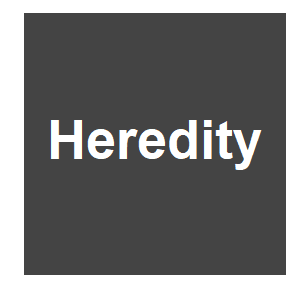
|
Quality over quantity: unraveling the contributions to cytoplasmic incompatibility caused by two coinfecting Cardinium symbiontsM. R. Doremus, C. M. Stouthamer, S. E. Kelly, S. Schmitz-Esser and M. S. Hunter, Heredity, 2022.
Cytoplasmic incompatibility (CI) is a common form of reproductive sabotage caused by maternally inherited bacterial symbionts of arthropods. CI is a two-step manipulation: first, the symbiont modifies sperm in male hosts which results in the death of fertilized, uninfected ... Keywords: Anopheles, gene drive synthetic, malaria, microsporidia, mosquito, symbiont |
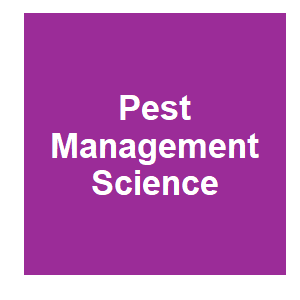
|
Recently introduced Wolbachia reduces bacterial species richness and reshapes bacterial community structure in Nilaparvata lugensT.-P. Li, C.-Y. Zhou, J.-T. Gong, Z. Xi and X.-Y. Hong, Pest Management Science, 2022.
BACKGROUND Wolbachia has been developed as an effective tool to suppress insect pests and arbovirus transmission. Recently, the brown planthopper Nilaparvata lugens, a serious agricultural pest, has been successfully transinfected with Wolbachia strain wStri from Laodelphax ... Keywords: Anopheles, gene drive synthetic, malaria, microsporidia, mosquito, symbiont |
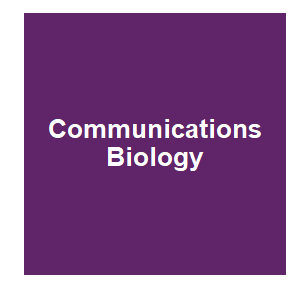
|
Wolbachia reduces virus infection in a natural population of DrosophilaR. Cogni, S. D. Ding, A. C. Pimentel, J. P. Day and F. M. Jiggins, Communications Biology, 4:1327. 2021.
Wolbachia is a maternally transmitted bacterial symbiont that is estimated to infect approximately half of arthropod species. In the laboratory it can increase the resistance of insects to viral infection, but its effect on viruses in nature is unknown. Here we report that in a ... Keywords: Anopheles, gene drive synthetic, malaria, microsporidia, mosquito, symbiont |

|
Microsporidia MB is found predominantly associated with Anopheles gambiae s.s and Anopheles coluzzii in GhanaJ. Akorli, E. A. Akorli, S. N. A. Tetteh, G. K. Amlalo, M. Opoku, R. Pwalia, M. Adimazoya, D. Atibilla, S. Pi-Bansa, J. Chabi and S. K. Dadzie, Scientific Reports, 11:5. 2021.
A vertically transmitted microsporidian, Microsporidia MB, with the ability to disrupt Plasmodium development was reported in Anopheles arabiensis from Kenya, East Africa. To demonstrate its range of incidence, archived DNA samples from 7575 Anopheles mosquitoes collected from ... Keywords: Anopheles, gene drive synthetic, malaria, microsporidia, mosquito, symbiont |

|
Breakthrough in non-GMO malaria controlC. Robinson and J. Matthews, GM Watch, 2021.
A just-published study carried out in a high-security lab claims to show that a CRISPR gene drive (a way of forcing a heritable genetic modification through a whole species or population) can crash populations of malaria-spreading mosquitoes. But why crash mosquito populations ... Keywords: Anopheles, gene drive synthetic, malaria, microsporidia, mosquito, symbiont |

|
Horizontal Transmission of the Symbiont Microsporidia MB in Anopheles arabiensisG. Nattoh, T. Maina, E. E. Makhulu, L. Mbaisi, E. Mararo, F. G. Otieno, T. Bukhari, T. O. Onchuru, E. Teal, J. Paredes, J. L. Bargul, D. M. Mburu, E. A. Onyango, G. Magoma, S. P. Sinkins and J. K. Herren, Frontiers in Microbiology, 12. 2021.
The recently discovered Anopheles symbiont, Microsporidia MB, has a strong malaria transmission-blocking phenotype in Anopheles arabiensis, the predominant Anopheles gambiae species complex member in many active transmission areas in eastern Africa. The ability of Microsporidia ... Keywords: Anopheles, gene drive synthetic, malaria, microsporidia, mosquito, symbiont |

|
Microbiome Innovation in Agriculture: Development of Microbial Based Tools for Insect Pest ManagementM. Qadri, S. Short, K. Gast, J. Hernandez and A. C.-N. Wong, Frontiers in Sustainable Food Systems, 4. 2020.
This review emphasizes the potential and use of microbes in sustainable insect pest management. We first review the diverse insect traits shaped by insect-microbe associations that span nutrition, immunity, ecological interactions with natural enemy, insecticide resistance, and ... Keywords: Anopheles, gene drive synthetic, malaria, microsporidia, mosquito, symbiont |
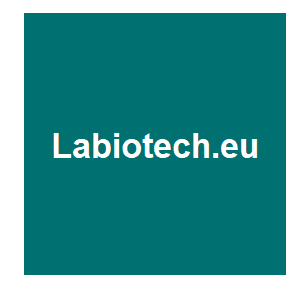
|
The Evolving Arsenal Against Mosquito-Born DiseasesJ. Smith, Labiotech.eu, 2020.
As the global climate continues to warm, disease-spreading mosquitoes such as Aedes aegypti are expected to establish themselves in the US and Europe. Keywords: Anopheles, gene drive synthetic, malaria, microsporidia, mosquito, symbiont |

|
Prospects and Pitfalls: Next-Generation Tools to Control Mosquito-Transmitted DiseaseE. P. Caragata, S. Dong, Y. Dong, M. L. Simões, C. V. Tikhe and G. Dimopoulos, Annual Review of Microbiology, 74:455-475. 2020.
A diverse array of next-generation tools has been designed to eliminate mosquito populations or to replace them with mosquitoes that are less capable of transmitting key pathogens. Keywords: Anopheles, gene drive synthetic, malaria, microsporidia, mosquito, symbiont |

|
Engineered symbionts activate honey bee immunity and limit pathogensP. Leonard Sean, J. E. Powell, J. Perutka, P. Geng, C. Heckmann Luke, D. Horak Richard, W. Davies Bryan, D. Ellington Andrew, E. Barrick Jeffrey and A. Moran Nancy, Science, 367:573-576. 2020.
Honey bees are essential pollinators threatened by colony losses linked to the spread of parasites and pathogens. Here, we report a new approach for manipulating bee gene expression and protecting bee health. We engineered a symbiotic bee gut bacterium, Snodgrassella alvi, to ... Keywords: Anopheles, gene drive synthetic, malaria, microsporidia, mosquito, symbiont |
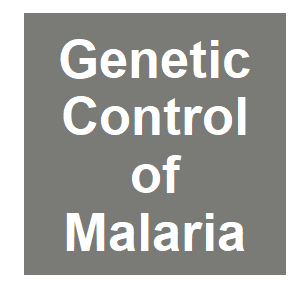
|
Concept and history of genetic controlScott, M. J. and Benedict, M. Q., Genetic Control of Malaria and Dengue, 2:31-54. 2016.
Genetic control of insects is an established method, mainly for insects that are important crop and veterinary pests such as medflies and screwworm. Efforts to use the same technologies against insects of medical importance, especially mosquitoes, have had limited success. The ... Keywords: Anopheles, gene drive synthetic, malaria, microsporidia, mosquito, symbiont |

Contact
David O’Brochta
Foundation for the
National Institutes of Health
geneconvenevi@fnih.org
RSS

